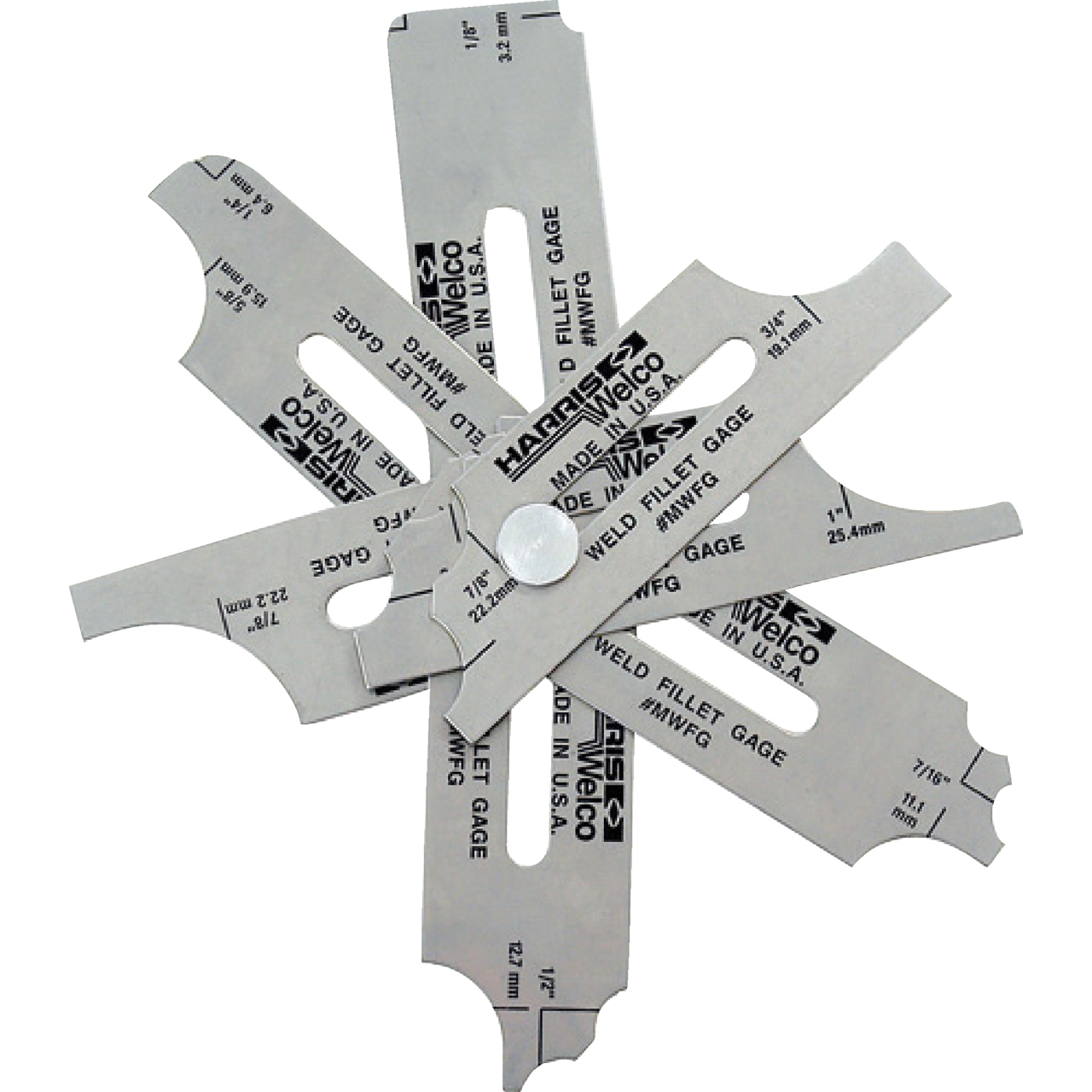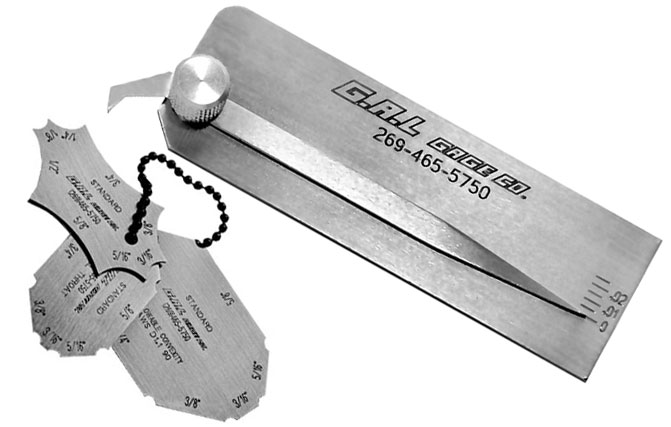Innovative Techniques to Fillet Weld Inspection and Testing: Enhancing Weld Quality and Compliance Standards
In the realm of welding, the top quality and honesty of fillet welds play an essential duty in making sure the architectural sturdiness and dependability of different commercial parts. With the constant drive for improved effectiveness and conformity with stringent criteria, the exploration of cutting-edge techniques to fillet weld assessment and screening has actually come to be vital. As sectors advance, the traditional approaches might no more suffice in meeting the demands of modern welding applications (Gauge Fillet Weld). By accepting cutting-edge technologies and approaches, a new horizon of opportunities emerges in the realm of weld quality assessment and adherence to conformity requirements.
Advanced Non-Destructive Screening Approaches
Making use of state-of-the-art modern technologies, progressed non-destructive testing approaches play an important function in making certain the honesty and high quality of fillet welds. These techniques, such as phased array ultrasonic screening (PAUT) and magnetic particle screening (MPT), offer detailed understandings right into the weld's internal structure without creating any type of damages to the product. PAUT, for example, makes use of numerous ultrasonic elements to examine the weld from various angles, giving a detailed visualization of possible issues like lack of blend or cracks.
By using these innovative non-destructive screening methods, weld inspectors can properly examine the quality of fillet welds, guaranteeing compliance with industry standards and regulations. The capacity to identify imperfections early on not just boosts weld top quality however likewise avoids costly rework or failures in architectural stability, underlining the relevance of these innovative screening strategies in welding examinations.
Robotics and Automation in Assessment

The combination of robotics and automation has revolutionized the examination procedure for fillet welds, enhancing performance and precision in high quality assessment. Robotics use accurate control and repeatability in inspecting welds, making certain reliable and constant results. Automated systems can be configured to comply with certain evaluation courses, guaranteeing extensive coverage of welds and minimizing the risk of human mistake.
Robot inspection systems geared up with innovative sensors can discover and gauge weld features with high precision, supplying in-depth information for analysis. These systems can determine flaws such as splits, lack of fusion, and porosity, allowing timely rehabilitative activities to be taken. Additionally, robotics and automation enable real-time data collection and evaluation, supplying prompt responses to drivers and helping with quick decision-making processes.
Moreover, using robotics and automation in fillet weld assessment boosts total performance by reducing inspection times and enhancing evaluation throughput. By enhancing the examination procedure, suppliers can make certain weld high quality and compliance requirements are satisfied effectively, eventually resulting in cost savings and boosted item quality.
Making Use Of Artificial Intelligence for Evaluation
Expert system plays a critical role in enhancing the efficiency and precision of evaluation in fillet weld assessment processes. By harnessing the power of AI, assessors can enhance the analysis of weld quality and conformity criteria, leading to a lot more trustworthy and accurate results. AI formulas can quickly process substantial amounts of data from weld examinations, finding problems or inconsistencies that might be challenging to identify with the nude eye. This advanced modern technology allows real-time surveillance of weld high quality, permitting instant corrective activities to be taken if any concerns are discovered.
Additionally, AI systems can pick up from past examination data, continuously boosting their ability to determine possible issues and discrepancies in fillet welds. This flexible understanding capability boosts the total quality control process, minimizing the likelihood of human error and guaranteeing that welds fulfill the called for standards. By integrating expert system right into fillet weld evaluation, markets can attain greater degrees of performance, uniformity, and conformity in their inspection practices.
Portable Tools for On-Site Assessment
Enhancing area examination performance, the fostering of mobile devices changes on-site analysis procedures for fillet welds. These devices use versatility and ease, allowing inspectors to conduct comprehensive assessments in different locations, including remote or webpage difficult atmospheres. Mobile tools such as ultrasonic testing gadgets, magnetic particle evaluation equipment, and digital radiography systems provide real-time information and high-resolution imaging capacities, allowing quick decision-making and immediate feedback on weld top quality.
One considerable advantage of portable devices is their capacity to enhance assessment procedures, minimizing downtime and improving overall performance - Gauge Fillet Weld. Assessors can quickly transport these devices to visit this site various job websites, getting rid of the need for moving heavy machinery or elements to off-site facilities. In addition, the mobility of these tools advertises cost-effectiveness by reducing transport costs and accelerating evaluation timelines
Furthermore, the usage of mobile devices for on-site assessment promotes proactive quality assurance procedures, as examiners can immediately recognize and deal with any prospective welding issues or inconsistencies. By incorporating these cutting-edge technologies into on-site inspection methods, welding professionals can make sure conformity with industry requirements and boost weld quality, eventually leading to enhanced architectural honesty and safety in numerous welding applications.
Assimilation of Data Administration Equipment

Having optimized on-site examination procedures with the utilization of mobile tools, the next stage includes the seamless assimilation of information management systems to better improve efficiency and information analysis capacities in fillet weld assessment and testing. By incorporating data monitoring systems into the inspection procedure, organizations can enhance data collection, storage space, and analysis. This combination enables real-time tracking of weld quality, instant identification of flaws, and punctual decision-making to fix any type of problems that might emerge during the evaluation procedure.
Information management systems play an important role in systematizing inspection data, promoting simple access for authorized personnel, and making certain data stability and safety. Via the combination of these systems, examiners can create extensive records, track historic data for trend analysis, and enhance total procedure efficiency. Moreover, the assimilation of information management systems enables seamless interaction in between various stakeholders entailed in the inspection process, promoting partnership and boosting total high quality control measures. Inevitably, the assimilation of information monitoring systems offers to boost the criteria of fillet weld assessment and screening, making sure conformity with market policies and enhancing weld quality.
Final Thought
Finally, cutting-edge techniques to fillet weld evaluation and screening have actually considerably enhanced weld top quality and compliance criteria. Advanced non-destructive testing approaches, robotics, automation, fabricated intelligence, mobile tools, and information administration systems have actually reinvented the means weld evaluations are conducted. By using these technologies, sectors can make sure that welds fulfill the required high quality criteria and policies, inevitably enhancing total efficiency and safety and security in welding processes.

Having actually optimized on-site inspection procedures through the utilization of mobile tools, the following stage involves the smooth assimilation of information management systems to better improve efficiency and information analysis capacities in fillet weld assessment and screening. Eventually, the assimilation of data management systems offers to elevate the requirements of fillet weld evaluation and i thought about this testing, making certain compliance with sector guidelines and enhancing weld top quality.
